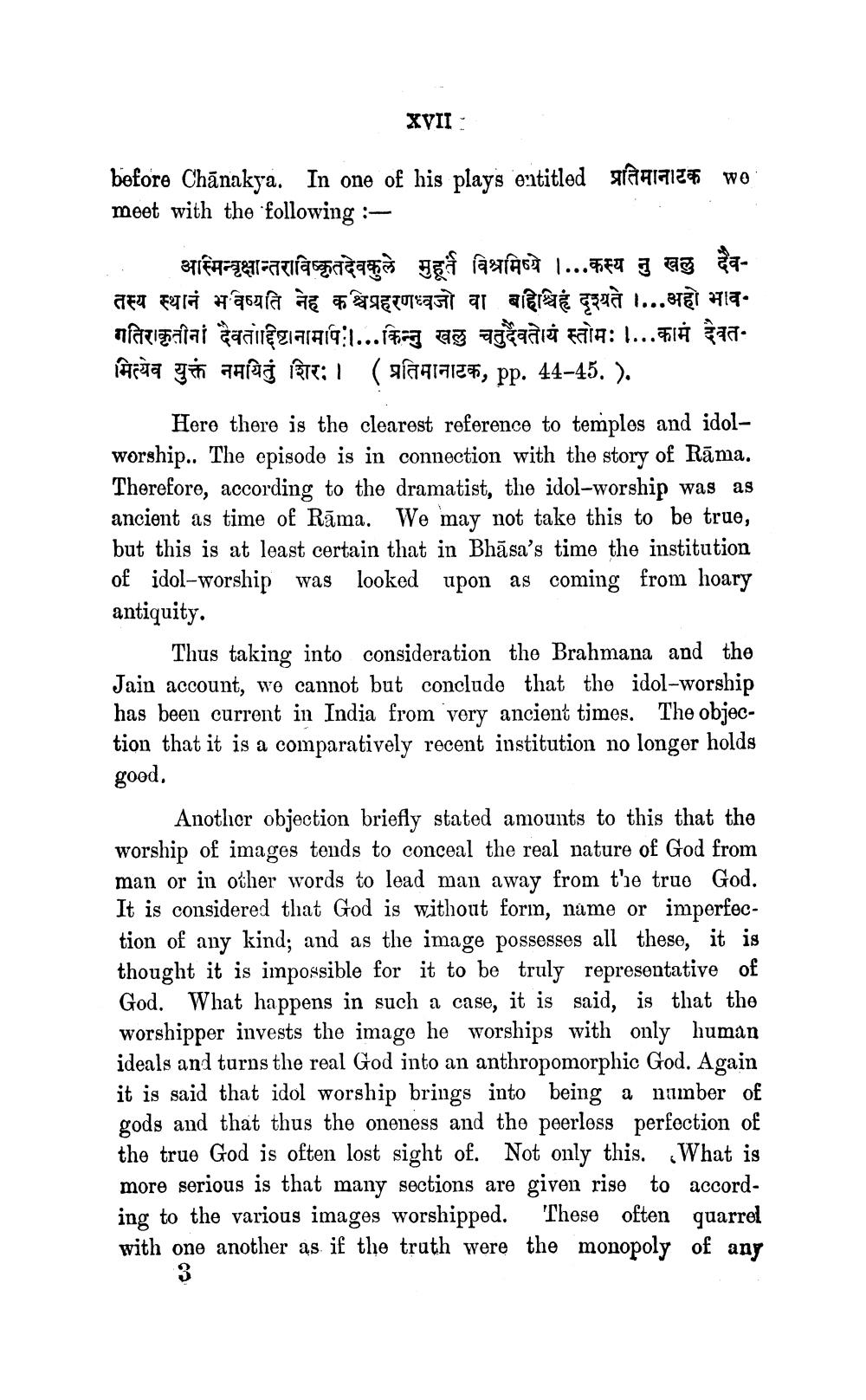________________
XVII :
before Chanakya. In one of his plays entitled a we meet with the following:
-:
अस्मिन्वृक्षान्तराविष्कृतदेवकुले मुहूर्त विश्रमिष्ये |... कस्य नु खलु दैव
तस्य स्थानं भविष्यति नेह कश्चिप्रहरणध्वजो वा बहिश्चिहं दृश्यते । ... . अहो भावगतिर कृतीनां देवताद्दिष्टानामपि । ... किन्नु खलु चतुदैवतेोयं स्तोमः ।... कामं देवतमित्येव युक्तं नमयितुं शिरः । ( प्रतिमानाटक, pp. 44-45.).
Here there is the clearest reference to temples and idolworship.. The episode is in connection with the story of Rāma. Therefore, according to the dramatist, the idol-worship was as ancient as time of Rama. We may not take this to be true, but this is at least certain that in Bhasa's time the institution of idol-worship was looked upon as coming from hoary antiquity.
Thus taking into consideration the Brahmana and the Jain account, we cannot but conclude that the idol-worship has been current in India from very ancient times. The objection that it is a comparatively recent institution no longer holds good.
Another objection briefly stated amounts to this that the worship of images tends to conceal the real nature of God from man or in other words to lead man away from t'he true God. It is considered that God is without form, name or imperfection of any kind; and as the image possesses all these, it is thought it is impossible for it to be truly representative of God. What happens in such a case, it is said, is that the worshipper invests the image he worships with only human ideals and turns the real God into an anthropomorphic God. Again it is said that idol worship brings into being a number of gods and that thus the oneness and the peerless perfection of the true God is often lost sight of. Not only this. What is more serious is that many sections are given rise to according to the various images worshipped. These often quarrel with one another as if the truth were the monopoly of any
3




